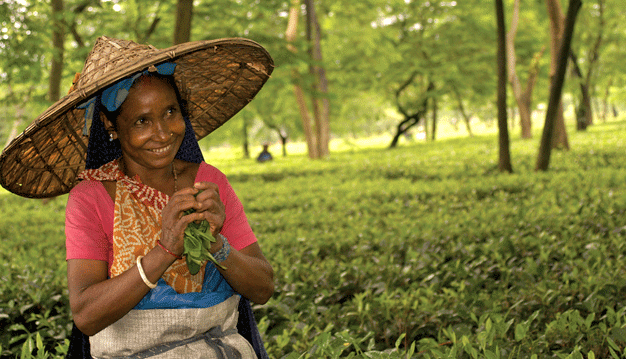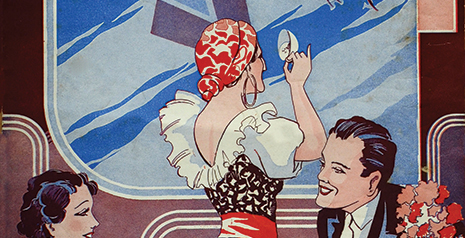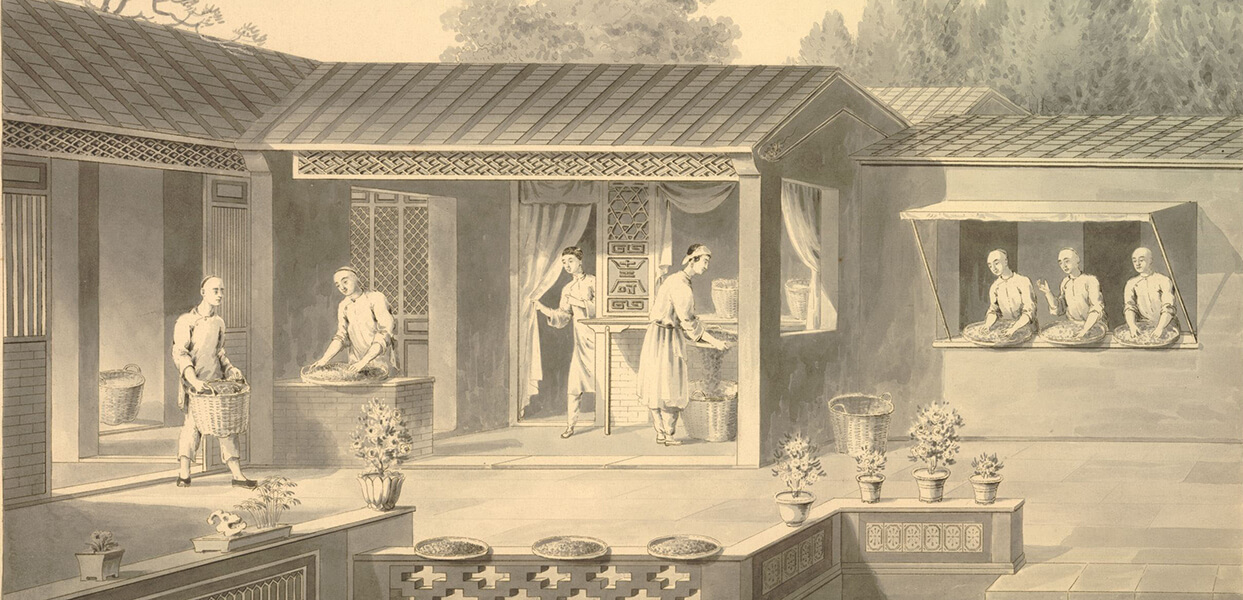Recycling Used Tea Leaves into Smouch
According to some estimates, as much as three-quarters of the tea imported into 18th century America was smuggled, mostly from The Netherlands, France, Sweden and Denmark. King George’s taxes not only encouraged widespread smuggling, both in the colonies and in England, it also led to the recycling of spent tea leaves into what was known, in the tea trade, as smouch.
In 1785, Richard Twining explained the methods used to “re-manufacture spent tea leaves” in Observations on the Tea & Window Act and on the Tea Trade:
I shall here communicate to the Public a particular account of this manufacture, which I have lately received from a gentleman, who has made very accurate enquiries on the subject.
METHOD OF MAKING SMOUCH WITH ASH LEAVES TO MIX WITH BLACK TEAS
When gathered they [used tea leaves] are first dried in the sun then baked. They are next put on the floor and trod upon until the leaves are small, then lifted and steeped in copperas, with sheep’s dung, after which, being dried on the floor, they are fit for use.
Twining suggested that in one small area of eight or nine miles, approximately 20 tons of smouch were manufactured every year.
But the adulteration of tea leaves was not taking place just in England. It was also a Chinese practice to mix other substances with the tea. European and American consumers expected their expensive green teas to have a blue tinge to their coloring and so, as the great plant hunter, Robert Fortune, explained in 1852 in A Journey to the Tea Countries of China, the Chinese method had for some time been to “crush Prussian Blue to a fine powder and add gypsum in a ration of three to four resulting in a light blue dye powder. Add the powder five minutes before the end of the last roasting”.
A London newspaper, the Family Herald, commenting on Fortune’s publication, said, “We Englishmen swallow tea, go to bed, turn and toss, keep awake, get up, complain of unstrung nerves and weak digestion, and visit the doctor, who shakes his head and says, ‘tea!’. This is what he says, but what he means is ‘Metallic paint’.”
Because the consuming public knew that it was easier to adulterate green tea, more and more people began to buy only black. This may have marked the beginning of the British preference for black tea and a gradual decline in the amount of green tea purchased.
This colorful practice was taught, a century later, to Japanese tea growers by their Chinese instructors. The American government put a stop to it and established the first official tea board to guarantee the safety of imported teas. This little-known consumer protection agency operated until 1997 when President Clinton repealed the Tea Importation Act, on it’s 100th birthday, and abolished the sole employee, thus saving the US government $200,000 annually.
Excerpt from The Social History of Tea by Jane Pettigrew & Bruce Richardson. Benjamin Press. June 2013.



